Crassula Tetragona (Miniature Pine Tree) Care & Propagation Guide
Written by Iris
Oct 22 2021
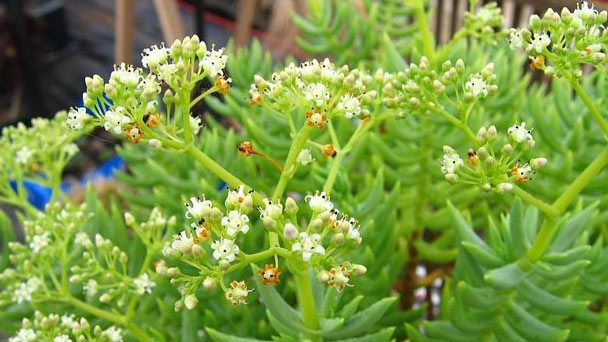
There's no doubt where Crassula tetragona (Miniature Pine Tree) got its popular name, as the bright green leaves are very much like the needles of a Pine Tree. While Crassula Tetragona (Miniature Pine Tree) can reach a height of several feet when grown outdoors in a temperate climate similar to its native South Africa, indoor specimens tend to remain more compact. As an excellent succulent for beginners, Crassula Tetragona (Miniature Pine Tree) can tolerate a fair amount of neglect -- in fact, it would rather skip watering than overwater it.
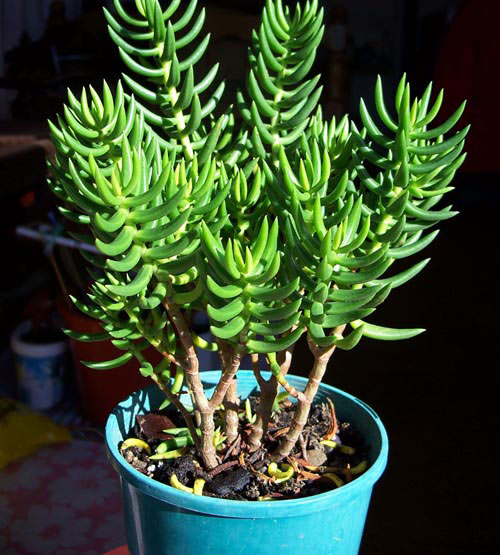
The stem cuttings can be placed in the soil in any manner because it will successfully root with adequate supplies of the caring parameters as long as the cutting has been done properly.
The leaf cuttings of Crassula Tetragona are also placed on the potting soil. Watering of the leaf cuttings is done when they are completely dry.
It will take 2-3 weeks for the succulent to start rooting if all the favorable parameters are received.
We have to follow the same process as stem cutting and the only difference is it takes a little longer compared to the stem cutting propagation. Literally, place them in the potting mix at first, then it is better to cover it until they sprout.
To separate the offsets from the mother plant, use a clean sharp knife. Gently divide the plant's roots. Be sure to handle these tiny plants carefully to avoid damaging them. Allow the offsets to dry out for a few days. This ensures that any wounds callus, before planting them in succulent soil mix. Once you’ve placed the offsets into their own containers, be sure to keep them out of direct sun. Once they establish roots, you can immediately begin treating them just as you would a mature Crassula Tetragona.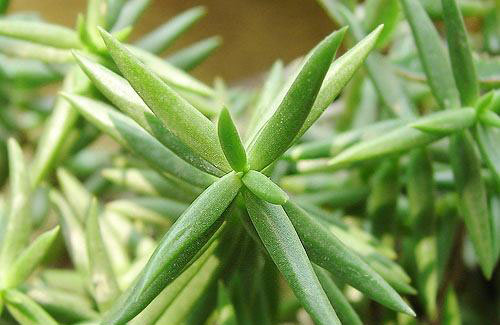
You cannot keep a particular schedule for watering. However during summer, it is advised to water Crassula Tetragona from 7-10 days and you could increase it more if the plant is going through a heat wave. On the other hand, you can minimize watering during winter months, ideally from once every two weeks.
You should be vigilant in watering this succulent if you are living in a humid location. Further if you have grown the plant indoors, you do not need to water them as much.
If a Crassula Tetragona is getting both overwatering and insufficient sunlight those will be quite harmful for its growth. During rainy seasons, you could depend on the rain fall and can cut over in watering externally as appropriate.
If they don't still get water during winter months, the best thing to do is to water them once a month or once every three weeks to two weeks. Make sure that you check on the soil whether it is dry enough before watering.
You can inspect the soil type and decide whether it is the right time to water. You could simply check the dryness of it. The top surface of the soil needs to be dry for us to water them again. In case you are a beginner in growing these, the best is to first underwater Crassula Tetragona and gradually increase watering after regular check ups on the plant.
For colder areas, we can make a mini-greenhouse to provide warmth, or else we can keep the plants in relatively warmer places using artificial grow lights.
Humidity also plays a vital role in the crassula tetragona care. Plants in high dampness & cooler temperatures will require less continuous watering than plants in hot & dry atmospheres. A hygrometer can be used to estimate the moisture content in the soil thereby helping us in watering the plant.
Best time to fertilize them is their growing season. You could do this in spring or in summer months. we can use a properly balanced mixture of fertilizer for houseplants . If not we can use a fertilizer which is available for cacti and succulent as well. We would recommend applying fertilizer at a quarter or half once every two weeks.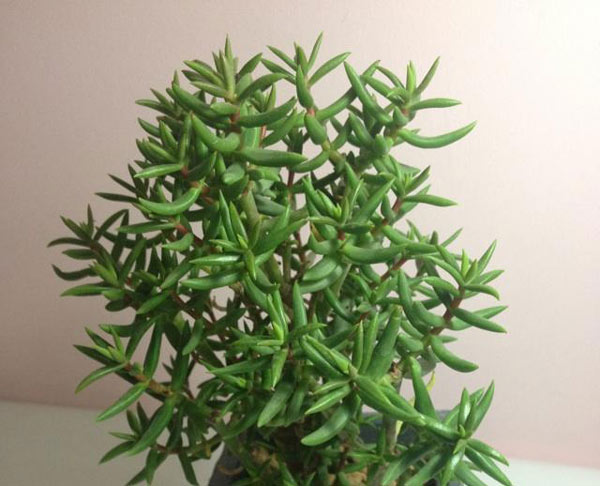
When you do have to trim your Crassula Tetragona, make sure to cut back the latest growth as close to where it joins with the older stems as possible.
You can also remove branches that are dead or diseased.
Keep in mind this plant's natural tendency for bushiness when deciding how much of each stem you should leave behind during any particular trimming session.
Trim off Crassula Tetragona leaves from bottom branches, so they don’t get too shaded
Remove old brown or damaged leaves
Cut new shoots coming up at their base after flowering away near ground level
Cut off or pinch back stems that have grown too long to maintain the overall shape of your plant
The branches of Crassula Tetragona will be a bit sharp when you first cut them but should eventually soften with time.
The most important thing is not to over prune and therefore remove all new growth from this succulent.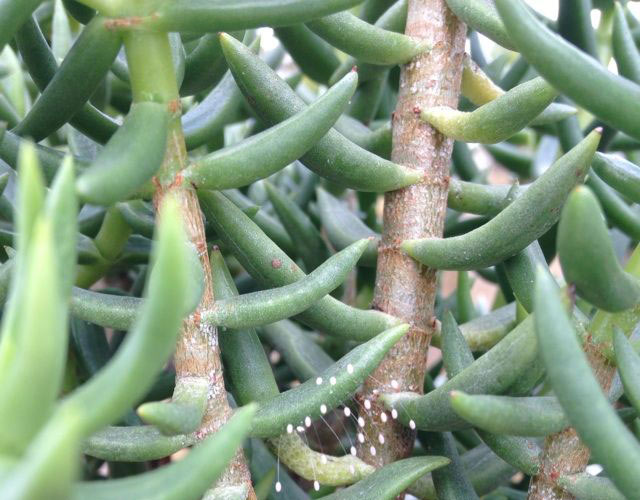
Mealybugs are the biggest pest threat to your Crassula Tetragona succulents. They love to hide in crevices on your Crassula so be sure to inspect your plants regularly. If signs of mealy bugs appear in the form of a white cottony web or disfigured leaves, be sure to eradicate them immediately. These small white scale insects drink the sap out of plants and secrete honeydew that attracts ants. A Q-tip dipped in alcohol or a spray from an organic pest killing soap will do the trick. Read my complete post on mealybugs eradication here.
Aphids are less common but still a potential threat to Crassulas. Like mealybugs, they suck out the sap. If left untreated, they will eventually kill your succulent. Protect your echeveria by applying diatomaceous earth to the soil and neem oil to the succulent. Use insecticidal soap to control existing infestations.
Make sure you never let your Crassula Tetragona stand in water or else the chances of root rot and other fungal diseases will increase. Root rot is caused by consistent moisture and can lead to bacterial infections. The good news is that it is easy to prevent. Avoid overwatering and use a well-draining soil.
Root rot is best caught early, so routinely check for rot on your Crassula. Rotted sections will be brown or black and mushy. The rot usually starts in the roots and spreads up the stem. If you find an infected part, you'll have to remove it or else it will spread. After cutting away the rotted section, leave your succulent out of the soil for a few days so it can dry out and callous over. Repot in fresh well-draining soil and keep an eye on watering.
Brown spots may appear on your Crassula. These are most likely from sunburn. Move your plant out of direct heat to prevent further damage.
Crassula 'Morgan’s beauty': This hybrid cultivar has silver leaves dusted in white, with pretty pink late spring flowers. It grows about 4 inches tall.
Crassula erosula 'Campfire': This variety has long-branching lime leaves that turn blazing red in winter. It's a clumping plant that grows about 4 to 8 inches tall and spreads up to 2 feet wide.
Crassula pellucida variegata : This plant exhibits a flowing mass of heart-shaped leaves variegated in pink, green, and creamy yellow.
Crassula perforata: Also known as the stacked Crassula, this plant has leaves that circle around a central stem, giving it the common name string of buttons.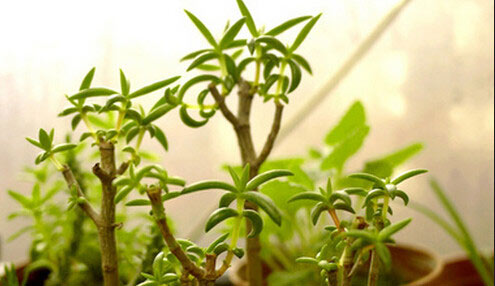
Although we cannot generalize the toxicity towards pets, like most of the succulents Pine tree is not toxic to cats and dogs.
In case you still suspect any kind of positioning, do not hesitate to reach out to your vet.
You can also check out the list of all the toxic & non-toxic plants provided by the ASPCA (American Society for the Prevention of Cruelty to Animals) to find out which succulents can harm the health of your lovable pet.
Where to Grow Crassula TetragonaHow to Grow Crassula tetragonaCrassula Tetragona Propagation with CuttingsCrassula Tetragona Propagation with LeavesCrassula Tetragona Propagation with OffsetsHow to Care for Crassula TetragonaCrassula Tetragona Light RequirementsCrassula Tetragona Soil CareCrassula Tetragona WateringCrassula Tetragona Temperature & Humidity CareCrassula Tetragona FertilizerCrassula Tetragona PruningCrassula Tetragona Pests & Diseases CareVarieties of Crassula TetragonaCrassula Tetragona Care FAQHow to Identify the Crassula Tetragona?Is Crassula tetragona Toxic to Pets?Is Crassula Tetragona An Indoor Plant?
Where to Grow Crassula Tetragona
Crassula Tetragona thrives from bright indirect light to direct sunlight, so in the indoor space, place it at a spot where it receives ample sunlight. You can also place the pot at a well-lit window, balcony, or patio. Grow lights are a good option if winters in your region are dark and gloomy.
How to Grow Crassula tetragona
Crassula Tetragona Propagation with Cuttings
After the Crassula Tetragona cuttings have healed. We need to put them in the potting soil.The stem cuttings can be placed in the soil in any manner because it will successfully root with adequate supplies of the caring parameters as long as the cutting has been done properly.
The leaf cuttings of Crassula Tetragona are also placed on the potting soil. Watering of the leaf cuttings is done when they are completely dry.
It will take 2-3 weeks for the succulent to start rooting if all the favorable parameters are received.
Crassula Tetragona Propagation with Leaves
You could propagate crassula Tetragona through the leaf cutting method too. However, that requires more time and we have to be very patient until we get the results from that. If we are doing the propagation through leaf cuttings, we have to ensure that we use the entire leaf including the base to get the best results.We have to follow the same process as stem cutting and the only difference is it takes a little longer compared to the stem cutting propagation. Literally, place them in the potting mix at first, then it is better to cover it until they sprout.
Crassula Tetragona Propagation with Offsets
Crassula Tetragona Offsets are the easiest way to propagate Crassula Tetragona. As the plant grows, it will eventually produce tiny offsets around the base of the stem. These pups can be easily removed and repotted in their own containers.To separate the offsets from the mother plant, use a clean sharp knife. Gently divide the plant's roots. Be sure to handle these tiny plants carefully to avoid damaging them. Allow the offsets to dry out for a few days. This ensures that any wounds callus, before planting them in succulent soil mix. Once you’ve placed the offsets into their own containers, be sure to keep them out of direct sun. Once they establish roots, you can immediately begin treating them just as you would a mature Crassula Tetragona.

How to Care for Crassula Tetragona
Crassula Tetragona Light Requirements
Bright, filtered light and ample airflow are recommended to attain their most vibrant colors. But most Crassula Tetragona plants need some shade in the hottest period of summer to avoid sunburn. Growing them in a place with morning sun and afternoon shade would be the most ideal.Crassula Tetragona Soil Care
It's important to provide porous soil with adequate drainage. However, Crassula Tetragona are not picky when it comes to soil pH. They will do well in sandy or even rocky soil.Crassula Tetragona Watering
Crassula Tetragona watering requirements could change depending on the place where you live as different places will have different weather conditions. Despite the fact that they do well during dry conditions, providing them some water on a moderate level could help them to stimulate their growth process. Be careful not to over water them as that will be harmful just like the other succulents.You cannot keep a particular schedule for watering. However during summer, it is advised to water Crassula Tetragona from 7-10 days and you could increase it more if the plant is going through a heat wave. On the other hand, you can minimize watering during winter months, ideally from once every two weeks.
You should be vigilant in watering this succulent if you are living in a humid location. Further if you have grown the plant indoors, you do not need to water them as much.
If a Crassula Tetragona is getting both overwatering and insufficient sunlight those will be quite harmful for its growth. During rainy seasons, you could depend on the rain fall and can cut over in watering externally as appropriate.
If they don't still get water during winter months, the best thing to do is to water them once a month or once every three weeks to two weeks. Make sure that you check on the soil whether it is dry enough before watering.
You can inspect the soil type and decide whether it is the right time to water. You could simply check the dryness of it. The top surface of the soil needs to be dry for us to water them again. In case you are a beginner in growing these, the best is to first underwater Crassula Tetragona and gradually increase watering after regular check ups on the plant.
Crassula Tetragona Temperature & Humidity Care
Keep in mind that extreme temperatures of any kind can harm your crassula tetragona plant. It may result in internal burns. Just like the extreme heat, if your tiny pine tree is exposed to extreme cold it may result in zero growth.For colder areas, we can make a mini-greenhouse to provide warmth, or else we can keep the plants in relatively warmer places using artificial grow lights.
Humidity also plays a vital role in the crassula tetragona care. Plants in high dampness & cooler temperatures will require less continuous watering than plants in hot & dry atmospheres. A hygrometer can be used to estimate the moisture content in the soil thereby helping us in watering the plant.
Crassula Tetragona Fertilizer
Just like some other succulents such as Jade plant, these Crassula Tetragona succulents will not depend on the fertilizer. Having said that they would still love the nutrients they require which will cause their proper growth and for flower blossoming. These Crassula Tetragona plants want immense energy for flower blooming and giving them that extra stimulation during flowering season will give you good results.Best time to fertilize them is their growing season. You could do this in spring or in summer months. we can use a properly balanced mixture of fertilizer for houseplants . If not we can use a fertilizer which is available for cacti and succulent as well. We would recommend applying fertilizer at a quarter or half once every two weeks.

Crassula Tetragona Pruning
The Crassula Tetragona succulent is a slow grower and will not need significant pruning unless it becomes overgrown.When you do have to trim your Crassula Tetragona, make sure to cut back the latest growth as close to where it joins with the older stems as possible.
You can also remove branches that are dead or diseased.
Keep in mind this plant's natural tendency for bushiness when deciding how much of each stem you should leave behind during any particular trimming session.
Trim off Crassula Tetragona leaves from bottom branches, so they don’t get too shaded
Remove old brown or damaged leaves
Cut new shoots coming up at their base after flowering away near ground level
Cut off or pinch back stems that have grown too long to maintain the overall shape of your plant
The branches of Crassula Tetragona will be a bit sharp when you first cut them but should eventually soften with time.
The most important thing is not to over prune and therefore remove all new growth from this succulent.

Crassula Tetragona Pests & Diseases Care
Crassula Tetragona generally do not require a lot of maintenance. The bottom leaves will brown and die off as the Crassula grows, and this is normal. Be sure to remove these to keep the plant healthy and so that it does not attract pests like the evil mealybug.Mealybugs are the biggest pest threat to your Crassula Tetragona succulents. They love to hide in crevices on your Crassula so be sure to inspect your plants regularly. If signs of mealy bugs appear in the form of a white cottony web or disfigured leaves, be sure to eradicate them immediately. These small white scale insects drink the sap out of plants and secrete honeydew that attracts ants. A Q-tip dipped in alcohol or a spray from an organic pest killing soap will do the trick. Read my complete post on mealybugs eradication here.
Aphids are less common but still a potential threat to Crassulas. Like mealybugs, they suck out the sap. If left untreated, they will eventually kill your succulent. Protect your echeveria by applying diatomaceous earth to the soil and neem oil to the succulent. Use insecticidal soap to control existing infestations.
Make sure you never let your Crassula Tetragona stand in water or else the chances of root rot and other fungal diseases will increase. Root rot is caused by consistent moisture and can lead to bacterial infections. The good news is that it is easy to prevent. Avoid overwatering and use a well-draining soil.
Root rot is best caught early, so routinely check for rot on your Crassula. Rotted sections will be brown or black and mushy. The rot usually starts in the roots and spreads up the stem. If you find an infected part, you'll have to remove it or else it will spread. After cutting away the rotted section, leave your succulent out of the soil for a few days so it can dry out and callous over. Repot in fresh well-draining soil and keep an eye on watering.
Brown spots may appear on your Crassula. These are most likely from sunburn. Move your plant out of direct heat to prevent further damage.

Varieties of Crassula Tetragona
There are so many species and cultivars of Crassula to choose from that you may become a collector. In addition to the standard jade plant cultivars (Crassula ovata), here are a few others that may catch your eye:Crassula 'Morgan’s beauty': This hybrid cultivar has silver leaves dusted in white, with pretty pink late spring flowers. It grows about 4 inches tall.
Crassula erosula 'Campfire': This variety has long-branching lime leaves that turn blazing red in winter. It's a clumping plant that grows about 4 to 8 inches tall and spreads up to 2 feet wide.
Crassula pellucida variegata : This plant exhibits a flowing mass of heart-shaped leaves variegated in pink, green, and creamy yellow.
Crassula perforata: Also known as the stacked Crassula, this plant has leaves that circle around a central stem, giving it the common name string of buttons.

Crassula Tetragona Care FAQ
How to Identify the Crassula Tetragona?
Crassula Tetragona is an evergreen fleshy 3-4 feet tall succulent plant. The succulent has fat pine-like apple-green leaves growing on vertically upright branches, and that's why the name. Initially, it looks like shrubs with small, thin narrow leaves and uniformly distributed green stems. But with maturity, they become more tree-like and the stem gets more woody and hard In late springs or early summer, the plant blossoms with yellowish-white blooms on the branch tips.Is Crassula tetragona Toxic to Pets?
Crassula tetragona is a favorable purchase for your indoor garden but considering your furry members these plants may come out to be toxic.Although we cannot generalize the toxicity towards pets, like most of the succulents Pine tree is not toxic to cats and dogs.
In case you still suspect any kind of positioning, do not hesitate to reach out to your vet.
You can also check out the list of all the toxic & non-toxic plants provided by the ASPCA (American Society for the Prevention of Cruelty to Animals) to find out which succulents can harm the health of your lovable pet.
Is Crassula Tetragona An Indoor Plant?
You could grow this as an indoor plant. You could grow this outdoors as well. If you grow this indoors, , you could grow it in a cute ornamental shaped pot or in a container.Latest Updated
- Benefits of Bugleweed - 7 Science-backed Health Benefits
- Bugleweed Dangers & Side Effects - Is It Poisonous?
- How to Plant Evergreen Trees - What You Should Know
- When to Plant Evergreens - Grow Guide for Evergreen Trees
- 12 Wonderful Evergreen Shrubs for Your Garden
- 12 Popular Evergreen Plants with Pictures for Beginners
- When And How To Prune A Lilac Bush Like a Pro
- How to Grow & Care for Lilac Vine (Hardenbergia Violacea)
- Japanese Lilac Tree (Syringa Reticulata) Care & Propagation Guide
- Shumard Oak Pros and Cons - What to Know
Popular Articles
- Winter maintenance of Antirrhinum Majus
- How to Grow Terminalia Mantaly Tree
- How to Grow and Care for Crossostephium Chinense
- How to grow Antirrhinum Majus in spring
- Peristeria Elata (Dove Orchid) Profile: Info & Care Guide
- Underwatered Snake Plant (Sansevieria Trifasciata) - Signs And How To Fix
- How to Care for Brazilian Jasmine Plant (Mandevilla Sanderi)
- How to Grow & Care for Graptopetalum Purple Delight in Summer
- Rosa Chinensis (China Rose): Plant Growing & Care Tips
- How to Care for Baby Sun Rose (Aptenia Cordifolia)